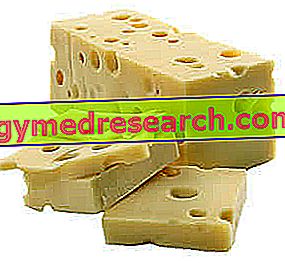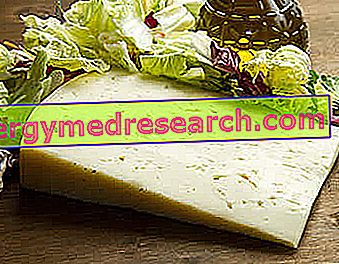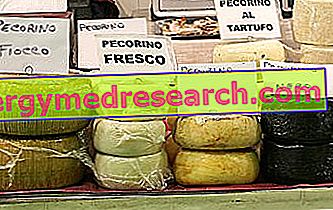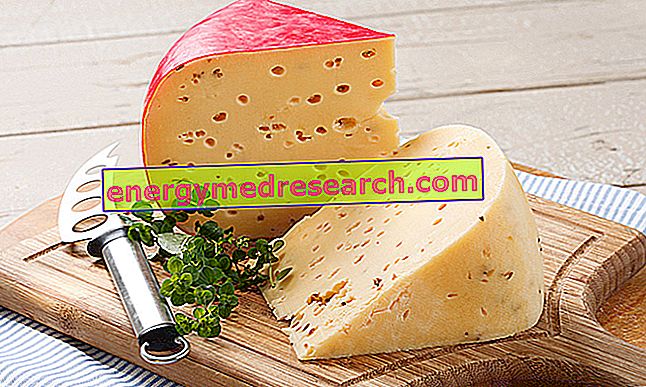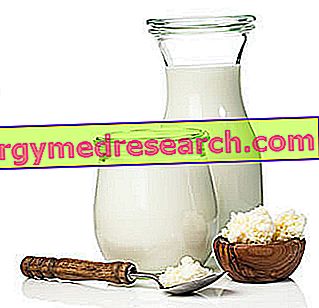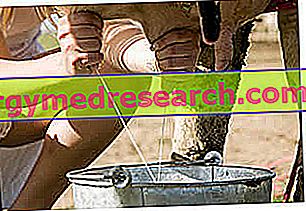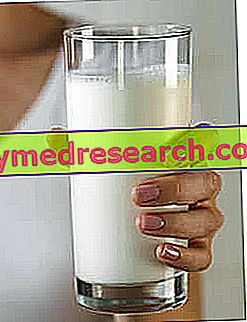What is Emmental Emmental (also called emmenthal or emmentaler ) is a hard Swiss cheese made from cow's milk and characterized by the presence of large and numerous holes in it (more or less regular depending on the type of processing). The emmental takes its name from its area of origin (Emmental valley, in the canton of Bern - central Alps); the Swiss one is marketed in three different types: sweet, seasoned and mature. Em
Category milk and derivatives
Generality Asiago (in local dialect "pegorin") is a national cheese that has the DOP recognition (Protected Designation of Origin). It takes its name from the homonymous Venetian city of Asiago, located on one of the most famous highlands of Italy. Asiago is produced using only cow's milk; it belongs to the group of semi-cooked cheeses and has a productive path that can be both summer and winter
Generality Fontina is a typical Italian cheese, soft and semi-raw (more or less seasoned), which since 1995 has enjoyed the DOP value (Protected Designation of Origin); this mark represents a qualitative protection of fontina, which, according to the requirements of the European Union, MUST BE PRODUCED within the geographical area of the Valle d'Aosta. Ul
What's this What is marzolino cheese? Marzolino is a very ancient Tuscan cheese made from sheep's milk (sheep's milk), raw or pasteurized - possibly corrected with little cow's milk. It is a type of Tuscan pecorino with specific characteristics of production, labeling, organoleptic and taste
What is Gouda? Gouda (goudse kaas) is a famous Dutch hard cheese, made from cow's milk. It takes its name from the place in which, for many centuries, it has been marketed, or the historic city of Gouda, in the South Holland. The first written mention of the cheese dates back to 1184 AD, which makes it one of the oldest known cheeses in the world
Generality Gruyere is NOT emmental (or emmenthal) and has no holes (holes) in the paste. Gruyere is a Swiss dairy product typical of the Gruyère district (with capital Bulle) in the canton of Friborg; it is also produced in other Swiss territories - such as the French cantons of Vaud and Neuchâtel - in the area of the former duchy of Savoy, in France, in the Italian alpine areas and in Bavaria. Desp
What's this What is kefir? Kefir or kéfir - or kephir or kefyr - is a milk-based fermented dairy product - or better, fresh milk. More precisely, the vaccine can be used in the production of kefir, or sheep's milk and / or goat's milk Originally from the Russian territory, kefir has gradually spread throughout the Caucasus - even to the south - where it has been produced and consumed in large quantities for millennia.
Generality Condensed milk is a food made from cow's milk to which a considerable portion of water has been removed. Usually, condensed milk is also sweetened by adding sugar, which is why "condensed milk" and "sweetened condensed milk" are often used as synonyms. Sweetened condensed milk is very dense and has an extremely sweet taste; due to these characteristics, if stored hermetically in a box, it can reach a shelf life of up to several years
Growth milk Milk is a food; it is the excretory product of the mammary glands, therefore it represents an exclusive element of the mammalian class. The milk is secreted to favor the first physical development of the offspring (for the man around 6 months) and changes its composition throughout the weaning period
Milk: maternal and animal Milk is a food of animal origin secreted by mammary glands of female mammals, useful for feeding the offspring during the first months of life (in the human being about 6); the milk changes composition over time and, taking for granted the good state of health (both of the nurse and of the progeny) follows and totally complies with the specific nutritional requirements of the first development
Milk: general aspects Milk is essentially a food. It is produced by the female breast of mammals, which, following the birth of their offspring, feed it for a sufficient period of time for a first and essential physical development. The milk appears as a white and opaque liquid, sweet and with an almost neutral pH; chemically, milk is an EMULSION of lipid globules dispersed in a similar fluid (by composition) to the blood plasma; this fluid is in turn composed of dissolved proteins and serum (salts, lactose and water)

